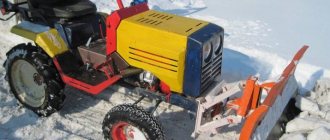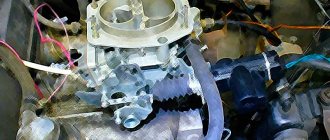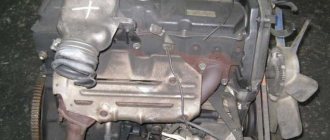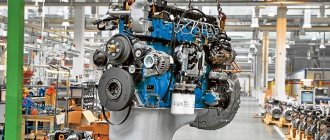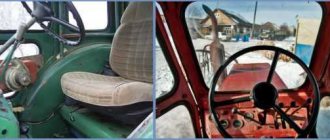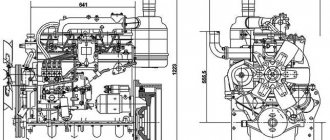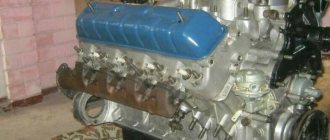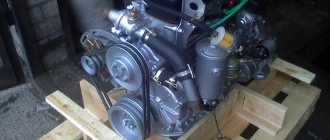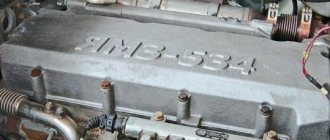A car can hardly be called an essential item in human life, but it is the most common means of transport. What can’t people live without? Without heart. This organ of the car can be called the power unit.
What it is? A car engine is a device that is capable of converting one type of energy into another. It is due to this that the movement of any vehicle is carried out.
As a rule, cars are equipped with an internal combustion engine that runs on pistons. It is divided into two types: carburetor and injection. Engine technical characteristics directly depend on this factor. All units (depending on type) operate on different types of fuel. This can be called gasoline, compressed natural gas or liquefied hydrocarbon, diesel fuel, better known as diesel fuel.
ZMZ-406
Who can argue with the fact that a large number of transportations are carried out on GAZ vehicles? Gazelles are most often equipped with the 406 engine. The carburetor power unit is available in two modifications. Injection - only in one. What advantages does this engine have? It consumes quite little fuel despite its high power. The unit will also last for quite a long time, but only if it is properly cared for. Among the disadvantages, the most acutely felt is that the engine is sensitive to the quality of the engine oil. If it works on a specific type, then it’s better not to experiment too much. There is a problem with the fan slowing down, which leads to overheating. The system that is supposed to regulate the temperature is a bit unstable. And since overheating can lead to an explosion, you should carefully monitor this. This engine model began production in 1996 and is still known today as a durable and reliable unit.
We install a Solex carburetor on a gazelle with a 406 engine
The Solex carburetor is manufactured by Dimitrovgrad Automotive Components Plant LLC under license from Solex, France. And this carburetor can be installed on a gazelle with a 406 engine without any problems. A general view of the carburetor is shown in Fig. 1 below.
Rice. 1. Solex carburetor.
Over many years of operation on gazelle cars, Solex-type devices have proven themselves to be reliable, durable, and convenient mechanisms. In the most critical conditions, frost -40 degrees, blizzard, blizzard, 406 engines start after overnight parking on the street and maintain a round-the-clock watch on all Russian highways.
The Solex carburetor on a gazelle with a 406 engine does not fail either in high altitude conditions with thin air, or in the sands of Central Asia, or in the Far North. All carburetor systems operate stably both on a lean and highly enriched mixture, and when there is overflow of fuel.
The settings are highly dependent on the fuel level in the float chamber and the idle speed adjustment. The first adjustment requires a lot of patience. At the factory, the fuel level is adjusted by a template with a test float. In a garage, the operation is carried out with repeated screwing in and out of the quality screw, as well as bending the edges of the floats.
Instructions for adjusting the Solex carburetor on a gazelle
ATTENTION! With the engine warm, remove the supply hose. Carefully! Gasoline may splash! The float chamber cover along with the floats is unscrewed and removed. Measure the distance from the Solex carburetor cover to the surface of the fuel in two chambers. It is better to do this with a caliper. The ideal distance for proper operation of all systems is 25-35 mm.
Adjustment is carried out by bending the edges of the floats. Overflowing gasoline must be drained from the float chambers. After completing the adjustment, you need to start the engine and fill the chambers with gasoline to the indicated level. The next adjustment relates to engine idle speed.
Warm up the engine to 90° and turn off. Tighten screw 11 shown in Fig. 1, all the way. Start the engine, remove the choke, and open the air damper (Fig. 1 number in Fig. 4). Unscrew the mixture quality screw, achieve stable engine operation with the accelerator pedal released. The speed should not exceed 1200 rpm.
Tighten the screw until the engine begins to jerk and run intermittently. Unscrew 1-2 turns back. The engine began to work like a clock. More subtle settings can be made at your own discretion. According to the instructions, engine speed should be in the range of 800-900 rpm.
Characteristic
It is worth noting that this unit bypasses the previous engine of the 402 series in some respects. The 406 power plant runs on 4 pistons. Its power is 110 “horses”. It is difficult to say for sure whether this engine is overheating, because some drivers report a constant rise in temperature, while others say that the cooling system is superfluous - the unit does not heat up.
If you want to convert your 406 engine (carburetor or injection) to gas equipment, then you should note that it gets along well with propane and methane.
It is difficult to highlight the issue of fuel consumption - it directly depends on driving conditions and the time of year. According to the characteristics stated by the manufacturer, consumption is on average 13.5 liters per 100 km. Engine capacity – 2.28 liters.
In the external environment, it is necessary to note the compact arrangement of all elements. A special feature will be the location of the spark plug - in the center. The maximum rotational power of the crankshaft is 5200 rpm.
What has been improved?
When answering the question about which engine is better to install on the GAZelle, it is worth considering the technical modifications of this unit. Minor design changes were made to this motor. Thus, engineers modified the cylinder head, eliminating the channels of the idle system. The weight of the cylinder head has been reduced by 1.3 kilograms. If on the 406th engine a non-asbestos cylinder head gasket was used, then on the 405th there is a two-layer metal part. It provides better sealing of the cooling system channels, lubrication and gas joints. Thus, engineers were able to achieve the best sealing of connections in critical areas. By the way, this engine was the first in the line to officially meet Euro-3 requirements.
History of the creation of ZMZ-406
This engine model was developed on the basis of the Saab 900 sports unit. The project was completed on paper in 1990. And just three years later the first prototypes of this engine appeared. Production of a small series was launched in 1996, but it began to roll off the main assembly line in 1997. Production ended in 2003.
At first, the 406 engine (carburetor) was installed on small boats that were used by government agencies. A little later, employees of the Gorky plant became interested in it, and over time it was acquired by Volga and Gazelle. After some time, it began to be included in the basic Sable kit. Manufacturers ZMZ and GAZ allowed the installation of “non-native” engines on many car models at their own request, so the 406 unit can also be seen on some Volgas, the configuration of which did not include this unit.
Modifications of the 3M3-406 motor
- “3M3-4062.10” is an injection engine for running on A-92 gasoline. It has a compression ratio of 9.3. Power – 150 hp For cars and minibuses.
- “3M3-40621.10” is a modification of the “3M3-4062.10” engine that meets the Euro-2 environmental standard.
- “3M3-4063.10” is a carburetor version of the engine, intended for installation on light commercial trucks and minibuses. Power – 110 hp
- “3M3-4061.10” – carburetor engine for light commercial vehicles. The compression ratio was reduced to 8 to run on A-80 gasoline. Power - 100 hp
Design and features
The 406 engine (carburetor) runs on gasoline. It has 16 valves and 4 pistons. The injection is regulated by a built-in electronic system.
During the creation of this power unit, the manufacturer decided to highlight it and add features. This can be considered the location of the shafts at the top of the cylinder block. The spark plugs are located in the center. Through the use of a new injection system and combustion chamber, the compression was increased to 9.3. The carburetor-type power supply system was also replaced.
Due to some manipulations, fuel consumption was reduced. However, there were rumors that the power of one model of the Volga car (the 406 engine was also installed on it) was deliberately and artificially increased.
Pros and cons of carburetors
The engines of modern cars are mostly equipped with electronic fuel injection systems - injection injection, mono-injection, central injection, distributed injection. The listed systems work perfectly, save fuel, but are too expensive. The second disadvantage is that if these units fail or become clogged, they can only be repaired in a car service center at special stands. You will have to pay a lot for this.
Carburetors have many advantages: inexpensive, simple mechanisms. When properly adjusted, they provide significant fuel savings. The most economical is the K-151D carburetor - 8 liters of AI-92 gasoline. The second largest fuel consumption is Solex - 8.5 liters of AI-92 gasoline.
The most voracious is the 4178 carburetor - 9 liters of AI-92 gasoline. The measurements were carried out on the highway at a speed of 90 km/h. Disadvantages of carburetors: problems with cold starts at subzero temperatures for Solex, 4178 models. Sometimes the gas pedal fails and the fuel mixture becomes lean.
These disadvantages disappear with proper adjustment. So to the question: which carburetor is better to install on a 406 gazelle engine, you can answer with complete confidence: all three carburetors - Solex, 4178, K-151D are completely working mechanisms and can be installed on your gazelle. Correct adjustments will turn your Gazelle into a beast. You will become the hero of all highways.
Help me decide, I’m choosing a car (Sable), but I haven’t had anything to do with injectors and haven’t driven. What's better? Pros - cons.
Comments 173
When choosing a car, you need to consider many factors. Where will it be used, under what conditions, for what transportation, etc.
I read the comments and didn’t understand anything. As in the joke, there is an ass but no words. Most use carburetor cars. and then they pour shit on him, like I’m all in white and the car is covered in shit. Dear, let's have respect for what we drive.
Well, live in your own little world, where the 402 is the best engine.
No problem, I’ll live. And you continue to drive around in your subarik, simultaneously pushing everyone with your obsessive opinions like “carb is bad” and “406 is better for everyone.”
Carb is shit of course. The 21st century is upon us.
As experience shows, people are too lazy to download and study the Talmud, and attributing failure to “carb is crap” is much more tempting than to attributing it to one’s own hands and lack of knowledge. And the worst thing is that people like you and others like you begin to promote their point of view on forums, often preventing other people from making an informed decision.
Thank God, I’ve never had any crap called 402. And I’ve never had any failures with it either.
I drove the 406 for 5 years, and it always started and drove, the chain did not jump or break, there were no problems with the sensors. I changed one or two over the entire period. 406 is better for everyone than shit 402.
you know, all this like “it doesn’t break, it runs, there are no problems and never have been”, this is purely show-off, and nothing more. In fact, in principle, it cannot be such that you are over 5,10, etc. I haven’t tinkered with an engine in years. It just can’t be. Everyone is doing something on engines, but not everyone is talking about it. This is pure Pont. If I did anything on the engine, then it’s honestly written down in the BZ. And with all this, I don’t show off that I’m stupidly skating, etc. And they don’t pour crap on the same injector. And If you haven’t dealt with a 402 engine, then from all your writings I can only draw one conclusion: all your loud conclusions like “carb shit”, “scrap metal” are made based on explosive prejudices, no matter yours, or someone else’s, and nothing more that. And I don’t even need to try to prove otherwise. No offense, but it is true
The difference between an injector and a carburetor
For a long time, only carburetor-type models were produced. Over time, injection ones appeared. Thanks to this, it was possible to achieve certain characteristics, for example, to reduce the amount of fuel consumed. If you follow the theory about internal combustion engines, then the Gazelle 406 carburetor engine begins to work more powerfully with a corresponding increase in the level of rotation of the crankshaft. How can this be achieved? The mechanism is made in such a way that when you press the pedal sharply, the amount of gasoline vapor increases. This, in turn, contributes to an increase in crankshaft speed.
The 406 injection engine (GAZ often used it) operates using a microprocessor. Thanks to it, even with light pressure on the pedal, the driving dynamics of the car will be improved.
My first experience of Volga farming.
Having sold my Mercedes W123, over time I began to understand that after all, life without a car is not easy, and I began to think about what to take in return. It was impossible to find a live Mercedes for little money, and after the W123 I wanted something “solid” and not flimsy. Here I see an advertisement: GAZ 3110i, 2002, mileage 92 thousand kilometers. By phone I found out that the car is in good condition, luxury interior, 1 owner. I arrived: it looked fine, beautiful wheels ala Mercedes-AMG 16 in diameter, nice (especially for the Volga!) blue interior. Engine ZMZ-406 injector. By the way, moving a little away from the topic, I would like to say a few words about the power of the ZMZ-406 injection engine on the Volga: previously they wrote the power in the PTS as 150, 145 hp. — this is just a mistake by the manufacturer in 1997-2001! ALL fuel-injected Volgas with a 406 engine have approximately 130 hp, and maybe even a little less due to poor quality engine parts, a faulty sensor, etc.! And the 406 engine on the Volga is only injection, the carburetor doesn’t even fit in height! The carburetor Volga is a 402 engine! The engine ran smoothly, only in some places on the doors there were small traces of corrosion and this corrosion was roughly removed using putty. I bargained (I managed to knock off almost a quarter of the original price) and got a deal.
Engine tuning
In order to slightly change the engine output data, you can carry out tuning work that will help improve performance. Some don't like low power, others don't like the amount of fuel consumed, and sometimes the driver wants to stand out from others by optimizing a specific characteristic.
The first thing that can be done at a service station is to improve the 406 engine (carburetor) in terms of power. As a rule, in this case, either the technical characteristics of the unit are increased by enlarging the pistons, or a turbocharger (or separate turbines) is installed. The second method will be more reliable, but the first will take much less effort, money and time.
In order to improve the overall dynamics, it will be enough to polish the input and output channels.
Driver mistakes
Because of the eternal desire to improve their unit, many try too hard and end up simply killing the engine. What mistakes should you not make when working with the 406 series power apparatus? It is better not to optimize an engine, the price of which varies within 100 thousand rubles.
You should not listen to the advice of inexperienced drivers who suggest reducing the flywheel weight. This will only lead to unnecessary problems and not increase power. Air swirlers are superfluous. There is no need to listen to specialists who offer to install them. If you use them, the power will be proportionally reduced. The vehicle speed does not increase when the intake air heats up. Engine reliability will decrease if droplets of water are added to the intake tract. Designers, on the contrary, try to separate the liquid from the fuel as much as possible, because when it gets into it, it contributes to the onset of corrosion. Some recommend installing an electric tensioner to change the technical characteristics of the engine. However, it not only costs a lot of money, but also completely kills the power unit. And these are not all (but the most common) mistakes made by drivers.
Basic problems and maintainability
The engine is completely repairable, like all products of the Zavolzhsky plant. The crankshaft can be ground, the cylinder block can be bored. The cast iron head is no longer so sensitive to low-quality antifreeze.
Like many modern power units, this engine requires only high-quality oil. Its design is made in such a way that the unit itself has become very finicky. Many drivers often complain about increased oil consumption on such engines.
Repairing a 406 engine is a costly and very serious matter. Many car enthusiasts prefer to give it to specialists. However, all repair work on this unit is described in detail in many articles and books.
Use in cars
Now this engine can be installed on any Gazelle and Volga model. Moreover, it is officially installed on some cars and trucks. However, due to the fact that many people tend to use it on other models, small problems may arise. As a rule, this leads to rapid breakdown of the pump, or the injectors simply stop working, the engine begins to struggle or oil leaks. There may be problems meeting specifications. In this case, you need to contact a service station. If the problem is even more serious, then contact the specialized centers of the plant. They are scattered throughout Russia and some CIS countries. The 406 engine (GAZ also helps fix problems, no worse than ZMZ) is so popular that high-quality repairs will not cause big problems. These manipulations will not take much time, and most importantly, they will not require global financial costs.
What's the result?
So which engine is better - 402 or 406? The GAZelle, equipped with the first engine, picks up speed very poorly and can hardly bear the load. Because of this, the engine overheats and consumes oil. Which engine is better for a GAZelle? As for the 406 engine, it is an excellent alternative between the 402 and 405. The cost of GAZelles with this engine is an order of magnitude lower than with an injection unit. At the same time, the 406th engine has a modern 16-valve timing mechanism and huge potential for tuning. If desired, it can be boosted by replacing the piston group with an Ulyanovsk one. The main disadvantage of this engine is the carburetor. Now there are very few specialists involved in setting them up. But the carburetor requires constant maintenance and adjustment.
So, we found out which engine is better for the GAZelle.

